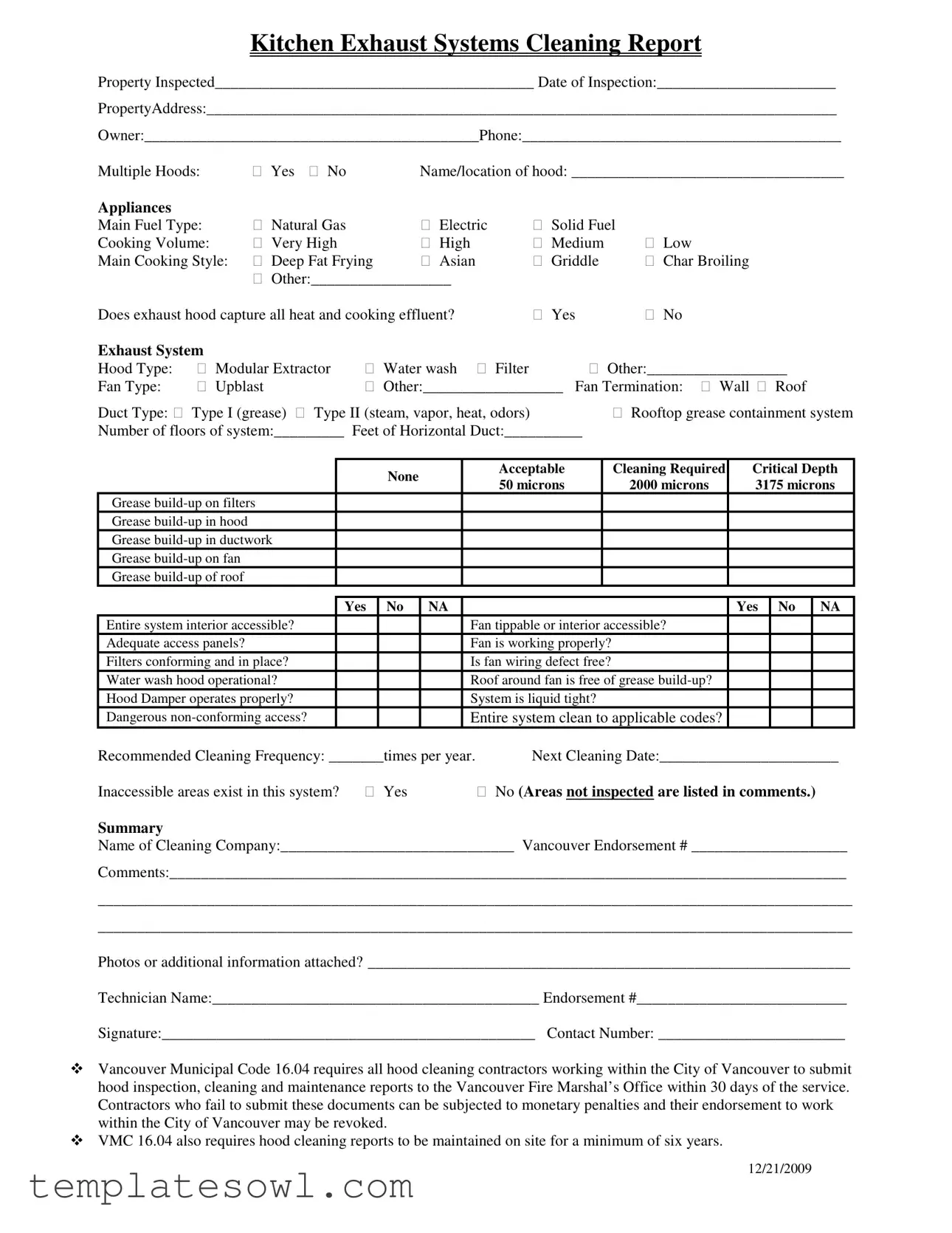What is the purpose of the Kitchen Cleaning Report form?
The Kitchen Cleaning Report form serves to document the inspection and cleaning of kitchen exhaust systems. It provides essential information about the condition of the system, the cleaning performed, and the safety measures taken. This report helps ensure compliance with local regulations and maintains a safe cooking environment.
Who needs to fill out the Kitchen Cleaning Report?
A qualified hood cleaning contractor must complete the Kitchen Cleaning Report after performing an inspection and cleaning of the exhaust system. This ensures that the contractor is aware of the system's current condition and any necessary maintenance actions.
What information is required on the form?
The form requires details such as the property address, owner's contact information, inspection date, type of kitchen appliances, and the cleaning company's name. Additionally, it needs to document the condition of various components of the exhaust system, including grease buildup levels and accessibility for cleaning.
How often should kitchen exhaust systems be cleaned?
The recommended cleaning frequency is based on the type of cooking done, as indicated on the form. Factors such as cooking volume and style influence how often the system requires cleaning. The contractor will provide a specific number of times per year for cleaning in the report.
What happens if a contractor fails to submit the report?
If a contractor does not submit the Kitchen Cleaning Report within 30 days of service, they may face monetary penalties. Additionally, their endorsement to work within the City of Vancouver may be revoked, impacting their ability to provide cleaning services in the area.
Are there any storage requirements for the report?
Yes, the Vancouver Municipal Code requires that hood cleaning reports be maintained on-site for a minimum of six years. This allows for easy access and verification of the cleaning and inspection history for the exhaust system.
What types of issues are noted on the report?
The report includes sections to document grease buildup on various system components, such as filters, hoods, and ductwork. Additionally, it notes whether the entire system is accessible for cleaning and if there are any dangerous non-conforming access issues present.
What should be done if there are inaccessible areas in the system?
If there are inaccessible areas, these should be clearly noted in the comments section of the report. A qualified contractor should follow up to address the accessibility issues as necessary, ensuring that all parts of the exhaust system can receive proper cleaning and maintenance.

